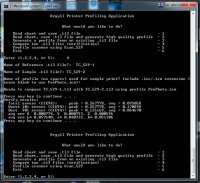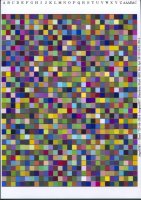RogerB
Print Addict
- Joined
- Sep 27, 2010
- Messages
- 293
- Reaction score
- 316
- Points
- 183
- Location
- S.E. England
- Printer Model
- Epson Pro3880
The file size generated by the batch file in question is down to the -T360 parameter. This gives a 16-bit, 360dpi TIFF. I agree with Grandad35 that 72dpi is sufficient for printing targets. although I personally use 180dpi for my Argyll targets simply because it makes the text look nicer! Even so, a 528-patch A4 chart generated by Argyll is only a little over 0.5MB.
As far as bit depth goes, it would be very hard to convince me that 16-bit files give any improvement in profile accuracy over 8-bit, given the measurement capability of the CM or even the i1Pro. And that's even assuming that you have a 16-bit print pipeline!
As far as bit depth goes, it would be very hard to convince me that 16-bit files give any improvement in profile accuracy over 8-bit, given the measurement capability of the CM or even the i1Pro. And that's even assuming that you have a 16-bit print pipeline!




 and respite!
and respite! that I am missing something important, really important
that I am missing something important, really important  but WHAT?
but WHAT?